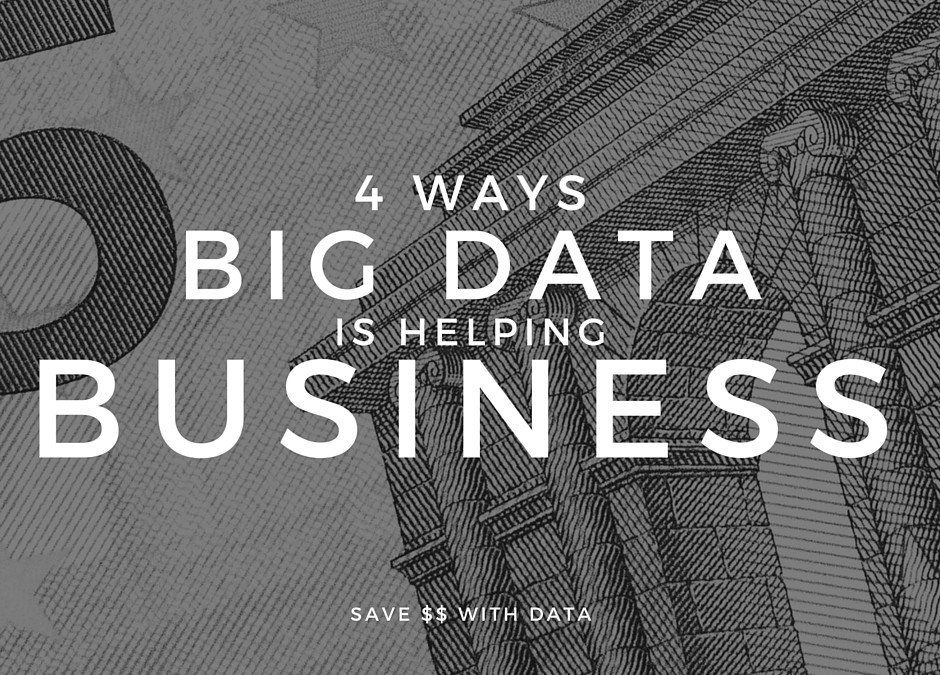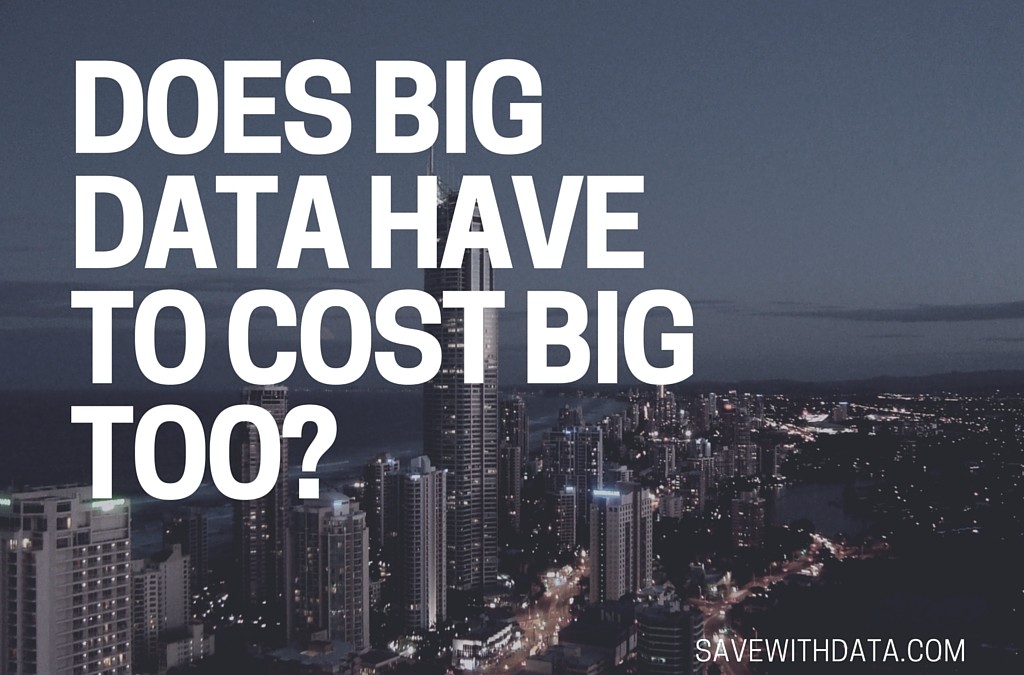
by Aleah Radovich | Jun 3, 2016 | Business Optimization, Save With Data
1.Take advantage of the freelance and temporary workforce
Why not start taking advantage of a temporary team that is specialized at doing whatever it is you need done? Then the job gets done better, and you don’t have to hassle with huge overheads and adding up costs such as: sick leaves, training, vacations, insurance etc.
Having a flexible team working on a per-project or task basis will significantly reduce your business operating costs, improve overall key performance indicators, and will allow you to focus on more important tasks while minor things are getting solved by your dedicated virtual assistant.
2.Start an internship program
Get in touch with a local college and offer to establish mutually beneficial relationships (you get an affordable workforce, and many college programs now require students to participate in an internship program). Win-win.
There are also high chances of discovering true talents to hire after they graduate, before the recruiters snatch them up.
3.Become energy-efficient
Utility bills eating up a large chunk of your income? First, you can opt for compact fluorescent light bulbs. They may cost more, but they function a great deal longer; thus saving you a pretty penny in the long run.
Second, you can switch to using energy-efficient appliances. Again, they do cost more, but you can cut down the expenses with numerous government-sponsored rebates and it may make you eligible for green energy tax credits.
Or you can even go as far as this European company to save a pretty penny on energy costs – save money, save the environment!
4.Keep a virtual office
If any of your team members work remotely (or can), and you don’t have an ongoing need to gather in one place, why should you even bother paying huge rent for office space?
Business meetings can be held at any venue, co-working space or conference hall.
However, you still like to keep things looking professional and earn your credits, right? And occasionally you do need to fax something or print a bunch of promotional materials. If that’s the case, most virtual offices provide you with temporary flat rate printing solutions, VoIP phones with a personal message box, corporate mailing address and even a dedicated receptionist handling your calls – plus a bunch of other cool perks that tend to cost very little compared to what they would cost in a normal office.
5.Barter
Have you ever thought about offering your service or specialty that your business provides in exchange for another service? Bartering is no longer that difficult with a number of B2B barter sites, such as Trade Bank. These services are gaining huge popularity among small and medium sized business owners.
Plus, it’s a great way to grow your business connections and score potential new clients or partners.
6.Go paperless
Do you really think you need all those paper copies for everyone? Do they really even want them? Or will they just end up in the trash anyway? Now look at your monthly printing costs and think again.
Still opting for paper bills and invoices? That’s stone age with so many online payment and invoices systems available at reduced costs. Retain your clients with email marketing and ditch mailing coupons and advertorials by snail mail to cut down the costs even more!
7.Ask for discounts
Take the nerve and ask the retailers directly whether they can give you a discount as a small business owner. Surprisingly, most will say yes if you are shopping for big ticket items. Alternatively, sneak around for coupons and special deals, sign up to retailers’ newsletters to be the first to know when certain items come on sale, plus get a few money-saving apps installed on your phone to receive instant alerts.
8.Invest in self-education
There’s no better investment than education and in the long-run, spending time and effort on learning something new will pay off later on! As long as you have the time!
Ultimately, this can save you money that might otherwise spend on hiring a consultant.
9.Buy used equipment and furniture
Shopping in thrift shops and bargain sales is no longer shameful. It’s trendy. Loads of businesses prefer to equip their offices with shabby vintage stuff costing pennies instead of luxury designer goods (that often look pretty much the same). Businesses claim to save up to 60% costs merely buying used office equipment like computers, faxes and printers. Scroll through Craigslist, check out your local paper classified and online auctions like eBay to get everything you need at least two times cheaper.
10.Cut back on paid software
Nowadays, there is an open-source, free alternative to nearly any product in the tech market. Be wary of software salespeople that try to tell you otherwise! Also be wary of consultants that may partner with paid software, and try to tell you that you need a specific software. When it comes to data, make sure your data consulting guys are product agnostic.
11.Conduct timely technology and service audits
How many paid apps and subscriptions do you currently have? And how many are you actually using? Bet these two numbers differ quite a bit. If you have not used a certain technology or service for the last 90 days, it’s time to cancel your subscription and stop paying for things you obviously do not need. Make it a rule to review all the paid products you have every two months. Moreover, before getting yet another piece of paid software, visit Download.com and try hundreds of software products for free through trial downloads, limited versions, and freeware to make sure that it’s indeed a product you need.
12.Eliminate finance charges
A lot of businesses lose thousands dollars annually on ridiculous things such as: high membership fees on business credit cards, late loan payments and credit-card processing fees. Simply staying on top of bills and paying them exactly when they are due, will save your business a great amount of money each year.
Yes, keeping up with the bills can get complicated, so try to automate as many financial processes as possible by implementing online payment systems and setting up special alerts when bills are due. Also, pay a visit to your bank and ask what better credit card options they can offer you as a business owner.
13.Opt for online advertising
Does your business have a Facebook page and Twitter and Pinterest accounts? Do you have a website properly optimized for mobile search?
In 2016 if your business is not online, it practically does not exist!
Compared to traditional marketing and advertising, promoting your business online is both cheaper, and faster. Start small by adding a blog to your website, offer expert advice, reach out to new media and bloggers with thrilling stories you can share, invest some time and money in social media marketing, and optimize your website properly to get a huge amount of targeted traffic and new customers.
14.Use the power of co-opetition
You can team up with fellow biz owners to collaborate and share expenses when buying new supplies in bulk. You can even share mailing lists and distribution channels with businesses offering complementary goods or services that may interest your customers.
Also, you can exchange advertising spaces on your websites; share each other’s coupons and special deals (for a small fee or percentage from each sale made, also known as affiliate marketing) and occasionally appear on each other’s business blogs to boost your rankings and attract a new audience to your websites.
15.Use Big Data

by Aleah Radovich | Apr 20, 2016 | Business Optimization, Business Transformation
Thus far, we have shown you how big data analysis can save businesses a lot of money by identifying inefficiencies, and driving better decision making. This has been the case for many different industries, ranging from fashion, to insurance, to the medical industry. Now, data is making its way into a new, and growing industry: cannabis.
Check out this podcast from data talk show that discusses how dispensary owners and managers are able to used data analytics to make their businesses more profitable.
In the podcast, they discuss how it can be very similar to “Safeway analytics.” Because in reality, dispensaries are just another retail store. The analytics help determine what products are most popular, thus telling management what products to put at eye level, and how often to re-order to ensure they are constantly stocked on the shelf.
The analytics can also help them save on fixed costs, by reducing labor and staff costs. You might think that Fridays would be the busiest day, so put most of your sales staff on the schedule. But why base such a decision purely on a guess? Dispensary owners can use the data to better determine how many staff members to schedule, and when.

by Aleah Radovich | Apr 11, 2016 | Business Optimization, Save With Data
Data is growing exponentially- we are collecting AND analyzing more data than ever. As this occurs, it is also becoming more and more helpful- not just for the medical field (where we often hear about big data analysis being used), but for businesses as well. Here are 4 ways that big data is having a big impact on business:
It Provides Businesses With More Detail
The more data a company has, the more information can be extrapolated (such as customer data). Because knowing your customers is the key to a thriving business, a greater level of detail and insight is the difference between a good company and a great company.
Targeted Businesses
Because you can analyze data according to specific criteria, it enables businesses to be more targeted. This can allow a business to provide more tailored products and services to their customers. Because this is the age of customization, this provides a more positive experience for your customers.
Improves Decision-Making
Big data can improve decision making in two ways: the analysis provides decision makers with more information and detail, and it also provides decision makers and management teams with accurate information. Data analysis is based on hard facts, rather than gut feelings or guesses. It can help minimize risks by uncovering statistics that may not have been known prior to to analysis.
Saves Money
This of course, is our favorite way that big data is helping business. Simply put, it saves your business money by highlighting problems before they become major issues. As a result, making quick decisions, based on facts will provide a greater return on investment, and more quickly.

by Aleah Radovich | Apr 7, 2016 | Business Intelligence, Business Optimization, Data Science
Big Data is bringing new business opportunities to companies around the world. We have officially entered this new age of Big Data, and it’s helping business, education, healthcare and more. This Big Data is offering vast amounts of information at rapid speeds, even in real time. And this information is fueling insights, leading to better decision-making. These better decisions enable huge savings, huge increases in sales, and happier customers. But big business opportunities do come at a cost.
Big Data is not really a new thing. It has been used for years and years; but it seems new because it’s something that is just now becoming affordable enough for it to be within reach for most businesses. Despite the decrease in costs, it still remains pricey.
Many companies are turning to software, such as Hadoop, in attempts to reap the benefits of Big Data, without the Big Cost. Although Hadoop is technically a free software, there are many costs associated with it.
The costs begin right away. The cost to set up the software is estimated at $9,000 a month, and takes around 4 months to do so. But the software isn’t the solution itself; you’ll need to hire a developer to develop the solution. But before you hire this developer, you’ll have to hire a business analyst to determine what question needs to be answered, or what hypothesis needs to be investigated. Then, he will tell the programmer what to code.
Another cost gets added if you have data from other systems that you need to import to your Hadoop cluster. Which is likely, as most companies have over 6 systems. In this case you will have to hire a database specialist to do this for you.
Finally, if you’re trying to get all you can out of the data, you will have to hire more data scientists and analysts. A business analyst alone is not effective when it comes to Big Data analysis.
So, it’s really not free. It’s actually estimated at just under $55,000 a month, according to this source.
But, this isn’t exactly fair, or attainable for small or medium-sized enterprises. Even though using data analysis always improves ROI, it is sometimes too large of an up-front cost for some companies – even if they wanted to, they couldn’t.
Luckily, there are options for companies that cannot afford this cost of set-up, maintenance and ongoing analysis. There are some companies that offer end-to-end solutions, however they do not offer their clients the best deal, as they are not customized to the company itself, they are a one-size-fits-all solution. But, there are a select few companies that truly do offer customized, end-to-end solutions at far less of a cost than these others. We did our research and found one for you, that offers customized solutions- in fact, they don’t even list their services on their website in advance. They wait to meet with you, learn about your business, and then tell you how they can help you.
But what’s even better is that they know that some are weary of putting that much cash upfront without seeing on a first-hand basis how it effects/benefits their company. This is why they have created a “special.” They will analyze one of your data sets, for a greatly reduced cost, reflecting a problem area in your company, to see how that analysis alone can help you. You can find more details from this blog about it.


by Stephanie Rabinowotz | Feb 24, 2016 | Big Data, Business Optimization
Big Data is created from numerous devices, around the clock, every day. Big Data comes from watches, smart phones, televisions, computers, cars, social media sites, and even home appliances. Every where we turn there are devices creating data and sending it to the cloud to be stored.
Once this data is in the cloud it is stored there until a company decides to dig in and start doing some analysis. This reservoir of information is an extremely useful tool for organizations big and small. The issue is that with all of this separation between where data is created and where it ends, we begin to forget that Big Data is coming from humans. Real people, all with different lifestyles and beliefs are the ones producing this information every second of the day.
It is important for companies to remember that when they are working with Big Data, they are handling real people’s information. Crunching codes may just look like a lot of numbers and symbols, but each one of those characters represents a specific person. This is why there are so many discussions about security surrounding Big Data. Companies much remember that they are dealing with personal information that may cause harmful repercussions if released or used in the wrong way. A prime example is when Target alerted a young girl’s father that she was pregnant before the daughter got the chance to.
Although Big Data is a great way to gain information on large masses of people, we must always remember to put the people first.

by Stephanie Rabinowotz | Feb 22, 2016 | Big Data, Business Optimization
Big Data analyitics is intended to be used for the purpose of making connections and discovering insights that humans may miss or take longer to uncover. With the recent announcement that companies have been using Big Data to gain information on their own employees, it may be time to question the lack of limitations surrounding Big Data. Is it okay to use Big Data to spy on people ?
Big Data is used to study the behaviors of millions of consumers everyday so what makes this incident any different? When companies look at consumer behavior, it is done with the motive of ensuring customer satisfaction and retention by knowing what individualized customers want. The issue is that when companies use Big Data to spy on the behaviors of their employees, they are not doing it with the employee’s best interest in mind. Employers are studying their employees’ online activity to determine which individuals may be searching for other jobs, are more likely to develop a serious illness or even those who are planning to start a family.
Instead of encouraging company culture and facilitating open communication with employees, companies are taking the sneaky route to protect themselves from losing workers. It is understandable for companies to be concerned about losing employees and the need to maintain production, but does this give them the right to essentially spy on their own people? It is important to remember that big data is simply a tool and that it is up to the person using it to gain ethical insights, not sneaky ones.













Recent Comments